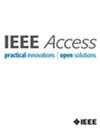利用深度学习模型改进植物病害分类的一种新的图像分割技术
IF 3.4
3区 计算机科学
Q2 COMPUTER SCIENCE, INFORMATION SYSTEMS
引用次数: 0
摘要
近年来,利用叶片图像进行病害检测已成为研究热点之一。利用计算方法对叶片病害进行分类,为农业生产提供了极大的方便。在这一领域进行的研究中,精度高、受环境因素影响最小、可用于农业用地的系统脱颖而出。本研究探讨了在农业部门正在进行的数字化转型背景下,深度学习架构在准确高效植物病害检测方面的应用。认识到人工智能在农业现代化中的关键作用,本研究的重点是提高植物病害分类的准确性。为了促进这项研究,我们精心整理了一个新的数据集“EruCauliflowerDB”,其中包含了感染Alternaria叶斑病和黑腐病的花椰菜植物的高分辨率图像。获得的EruCauliflower数据集包含114张来自Alternaria叶斑病类的图像和99张来自黑腐病类的图像。提出了一种新的综合分类体系,包括三个关键阶段。首先,引入了一种新的分割方法“BorB”,有效地分离出病叶区域。这种分割方法使我们能够提取Lab和RGB格式的叶子图像的特征。将两种图像格式得到的特征与OR逻辑运算相结合,将叶子区域与背景分离。其次,将几何变换等数据增强技术应用于分割后的图像,增强数据多样性,提高模型的鲁棒性;最后,采用四种最先进的深度学习模型——vgg16、ResNet50、EfficientNetB3和MobileNetV3 large进行疾病分类。所提出的集成系统表现出优异的性能,在所有四个模型的EruCauliflowerDB数据集上实现了100%的分类准确率。为了评估系统的鲁棒性,对独立的MangoLeafBD数据集进行了进一步的评估,得出了100%分类准确率的一致结果。通过从另一个多类数据集PlantVillage中选择15个类,应用该方法进行分类。实验结果表明,PlantVillage植物叶片图像的分类准确率为99.78%。实验结果表明,该方法可以有效地应用于实际农业环境中,帮助农民早期发现病害,从而减少作物损失,提高产量质量。本文章由计算机程序翻译,如有差异,请以英文原文为准。
BorB: A Novel Image Segmentation Technique for Improving Plant Disease Classification With Deep Learning Models
Disease detection from leaf images has been among the popular studies in recent years. Classifying leaf diseases using computational methods provides great convenience for farming. In the studies carried out in this field, systems that work with high accuracy and are least affected by environmental factors that can be used in agricultural lands come to the fore. This study investigates the application of deep learning architectures for accurate and efficient plant disease detection within the context of the ongoing digital transformation of the agricultural sector. Recognizing the critical role of AI in modernizing agriculture, this research focuses on enhancing the accuracy of the classification of plant diseases. To facilitate this research, a novel dataset, “EruCauliflowerDB”, was meticulously curated, comprising high-resolution images of cauliflower plants infected with Alternaria Leaf Spot and Black Rot. The obtained EruCauliflower dataset contains 114 images from the Alternaria Leaf Spot disease class and 99 images from the Black Rot disease class. A novel integrated classification system was developed, encompassing three key stages. First, a novel segmentation method, “BorB,” was introduced to effectively isolate diseased leaf regions. This segmentation method enables us to extract features of leaf images in Lab and RGB formats. Combining the features obtained from the two image formats with the OR logical operation separates the leaf region from the background. Second, data augmentation techniques, including geometric transformations, were applied to the segmented images to enhance data diversity and improve model robustness. Finally, four state-of-the-art deep learning models—VGG16, ResNet50, EfficientNetB3, and MobileNetV3 Large—were employed for disease classification. The proposed integrated system demonstrated exceptional performance, achieving 100% classification accuracy on the EruCauliflowerDB dataset across all four models. To assess the system’s robustness, further evaluations were conducted on the independent MangoLeafBD dataset, yielding consistent results with 100% classification accuracy. The proposed Integrated Classifier method was applied by selecting 15 classes from the PlantVillage, another multi-class dataset. As a result of the experiments, PlantVillage plant leaf images were classified with 99.78% accuracy. Experimental results show that the proposed method can be effectively utilized in real-world agricultural settings to assist farmers in early disease detection, thereby reducing crop losses and improving yield quality.
求助全文
通过发布文献求助,成功后即可免费获取论文全文。
去求助
来源期刊

IEEE Access
COMPUTER SCIENCE, INFORMATION SYSTEMSENGIN-ENGINEERING, ELECTRICAL & ELECTRONIC
CiteScore
9.80
自引率
7.70%
发文量
6673
审稿时长
6 weeks
期刊介绍:
IEEE Access® is a multidisciplinary, open access (OA), applications-oriented, all-electronic archival journal that continuously presents the results of original research or development across all of IEEE''s fields of interest.
IEEE Access will publish articles that are of high interest to readers, original, technically correct, and clearly presented. Supported by author publication charges (APC), its hallmarks are a rapid peer review and publication process with open access to all readers. Unlike IEEE''s traditional Transactions or Journals, reviews are "binary", in that reviewers will either Accept or Reject an article in the form it is submitted in order to achieve rapid turnaround. Especially encouraged are submissions on:
Multidisciplinary topics, or applications-oriented articles and negative results that do not fit within the scope of IEEE''s traditional journals.
Practical articles discussing new experiments or measurement techniques, interesting solutions to engineering.
Development of new or improved fabrication or manufacturing techniques.
Reviews or survey articles of new or evolving fields oriented to assist others in understanding the new area.
 求助内容:
求助内容: 应助结果提醒方式:
应助结果提醒方式:


